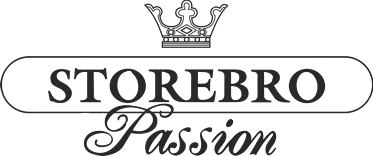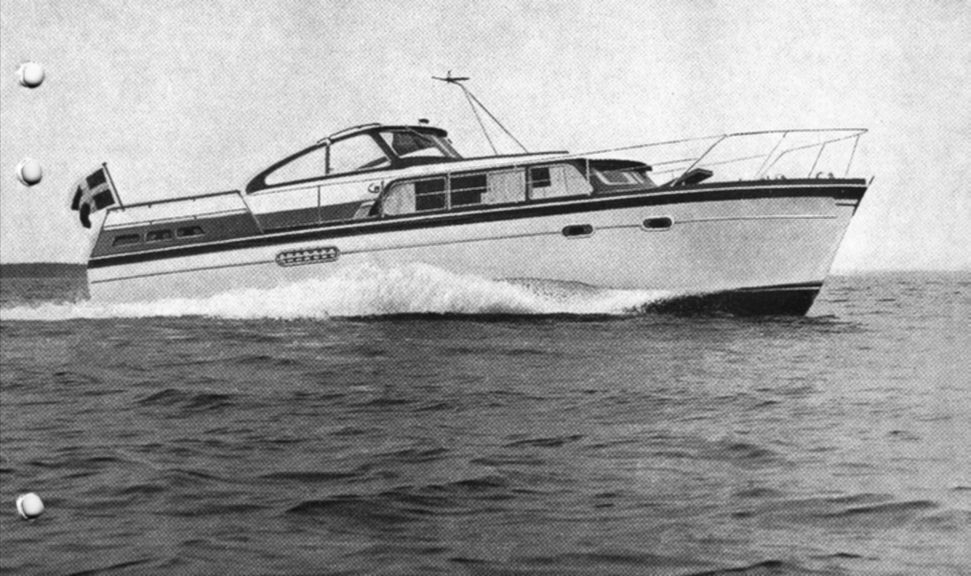

Technical Data | |
| Production period | 1963-1964 |
| L.o.a. [m] | 11.60 - 12.20 |
| Beam [m] | 3.60 - 3.70 |
| Draft [m] | 1.10 |
| Freeboard front [m] | 1.57 |
| Freeboard aft [m] | 1.20 |
| Displacement [t] | 9.50 - 11.00 |
| Fuel [l] | 2 x 400 |
| Water [l] | 200 |
| Hull | Mahogany |
| Number of boats | 1 - 38' 2 - 40' |
| Designer | Otto Scheen jun. |
The Golden Eagle was Örnmaskiner's top model. It was launched in 1964 and was an extremely luxurious ship by the standards of the time. For the second time after theRoyal Cruiser I (1959), the ship was designed by Otto Scheen Jr. from the successful Norwegian design office Furuholmen & Scheen.
Three boats were built and delivered to customers in Germany, Finland and Sweden.
The first boat was delivered on 1964-01-13 to its new owner to Germany. This boat was 11.60 m long, 3.60 m wide and displaced 9.5 t. The water tank capacity of the first ship was specified as 500 litres.
The other two boats were modified slightly. So their length grew by two feet to 12.20 m and a width of 3.70 m. The weight rose to 11 t. The extension of the boat was mainly used to enlarge the cockpit. The change can be seen on the modified end of the side cockpit windows. While forming thiswith a bend downwards at the first boat , the window frames of the other two boats run out pointed. In addition, the rear end of the cabin windows was more inclined than on the first ship, which made the window section appear somewhat more elegant.
The second and third boat were delivered on 1964-05-09 and on 1964-06-13.
The second Golden Eagle was equipped with the same upholstery ("crown fabric"), which has also been used for the Kings Cruiser and the Royal Cruiser I.
Others
The prototype was built by Lennart Elmström and others. He later reported on the problems with the delivery of the ship. The ship was exceptionally large for the conditions at that time and hardly fitted into the shipyard's hall during construction. When the finished ship built at the end of the shipyard hall was to be taken out of the hall, it turned out that there was no room for a cart under the ship. Production manager Tage Truedsson therefore decided to build a sledge from wooden planks. To reduce the friction of the sledge, all the soap supplies in the area were bought up. The transport could then begin. However, even the hall gate was not high enough. So before the way out into the open air, the lintel of the gate had to be raised first.
After the ship had been successfully pulled outside, it turned out during the crane operation that several trees stood in the way of the successful slewing of the ship. Without further ado, these last obstacles were removed with a power saw. The finished ship was then successfully loaded and transported to Västervik for testing.

|
|
Golden Eagle with modified aft cabin (draft) |
It was an attempt to build the ship with an extended aft cabin. This was never realized. A draft with this is to find in the Storebro complete brochure of 1965.
2025-04-22
Photos and images |
||||||||||
|
| Engines | Volvo Penta TMD47B | |
| Production | 1961-1965 | |
| Fuel | Diesel | |
| Stroke | 4 | |
| No. of cylinders | 6 | |
| Bore | [mm] | 96.00 |
| Stroke | [mm] | 110 |
| Compression ratio | 17.0:1 | |
| Displacement | [l] | 4.70 |
| Torque | [Nm] | |
| Engine output | [kw/(HP)] | 66 - 85/ (90 - 115) |
| Rotations | [1/min] | 1800-2500 |
| Weight | [kg] | 860 |
| Engines | Engine output [kw/(HP)] |
| Volvo Penta TMD47B | 66 - 85/ (90 - 115) |
|
|||||||||||||||